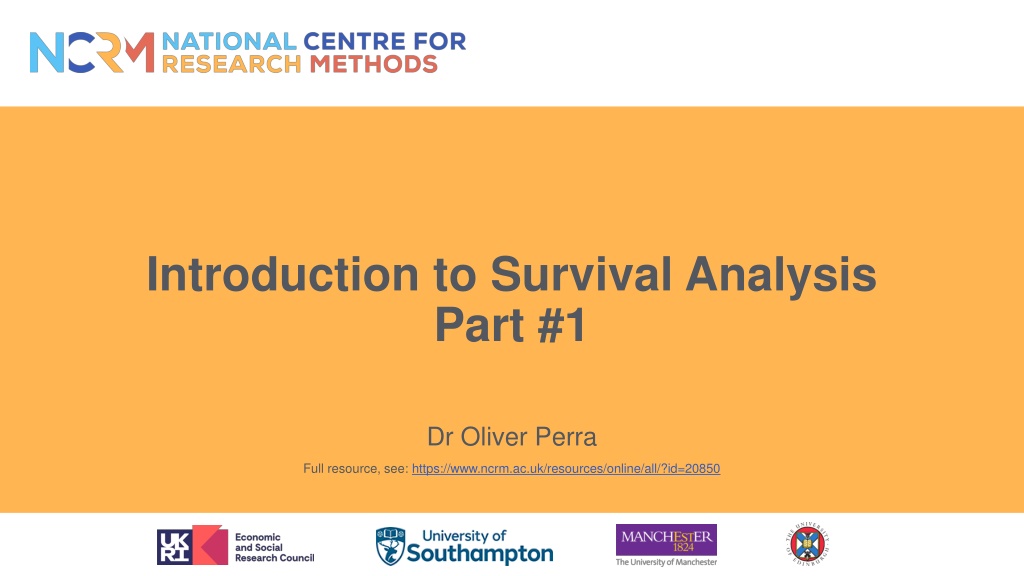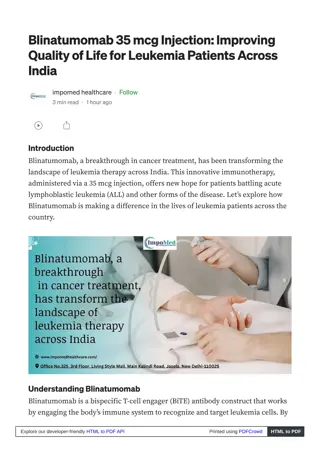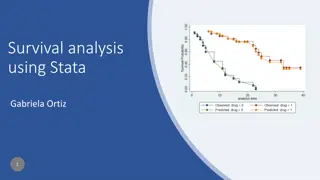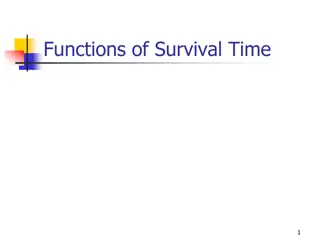
Understanding Survival Analysis and Its Applications
Explore the concept of survival analysis, its importance in various fields such as biomedical sciences, psychology, and economics, and the limitations of traditional statistical methods in analyzing events occurrence and timing. Learn about the prerequisites for survival analysis and the types of questions it can answer, along with key study designs and requirements for investigating target events.
Download Presentation

Please find below an Image/Link to download the presentation.
The content on the website is provided AS IS for your information and personal use only. It may not be sold, licensed, or shared on other websites without obtaining consent from the author. Download presentation by click this link. If you encounter any issues during the download, it is possible that the publisher has removed the file from their server.
E N D
Presentation Transcript
Introduction to Survival Analysis Part #1 Dr Oliver Perra Full resource, see: https://www.ncrm.ac.uk/resources/online/all/?id=20850
Outline Type of questions answered by Survival Analysis Common statistical methods are inadequate Pre-Requisites for Survival Analysis
Background Researchers are often interested in investigating the occurrence of events, e.g.: Bio-medical sciences: Onset of puberty; Psychology / Psychiatry: First occurrence of suicidal ideation; Sociology / Economics: first full-time employment after leaving education.
What do these example have in common? Bio-medical sciences: onset of puberty; Psychology / Psychiatry: first occurrence of suicidal ideation; Sociology / Economics: first full-time employment after leaving education. Interest in: Whether Whether the event takes place; When When does it take place.
Investigate whether and when questions Common statistical methods are inadequate:
Investigate whether and when questions Common statistical methods are inadequate:
Survival Analysis Set of statistical methods to investigate events occurrence and their timing: Study Designs: Experimental; Longitudinal (prospective; retrospective) Events: Only takes place once; Recurring; The main requirements are interest in: Whether Whether the target event takes place; When When does it take place.
Survival Analysis: Pre-requisite #1 A clearly defined target event A transition from one state to another state: E.g.: Never Never thought about suicide (state 1) vs. Mutually exclusive and exhaustive states. Target events can : Be dichotomous (never vs. ever suicidal thoughts); Have more categories (e.g.: employed, unemployed, self-employed, retired); Take place once; Take place several times (recurring). target event: vs. Ever Ever thought about suicide (state 2).
Survival Analysis: Pre-requisite #2 A clearly defined beginning of time beginning of time: A point where all individuals have not yet experienced the target event, but they are susceptible to experiencing it. The same for all individuals; Linked to a precipitating event.
Survival Analysis: Pre-requisite #3 A metric for time metric for time: Record time in the smallest possible units relevant to the event of interest. Two main types: Continuous time Discrete time
Survival Analysis: Pre-requisite #3 A metric for time metric for time: Record time in the smallest possible units relevant to the event of interest. Two main types: Continuous time Discrete time Tie Ties
Summary Survival Analysis: Survival Analysis: statistical method to answer questions concerning whether and when an event takes place Prerequisites: #1 Define event occurrence: transition from state 1 to state 2 #2 Identify beginning of time : starting point of study should not be related to the target event occurrence #3 Specify time metric: smallest possible unit relevant to the event of interest






















